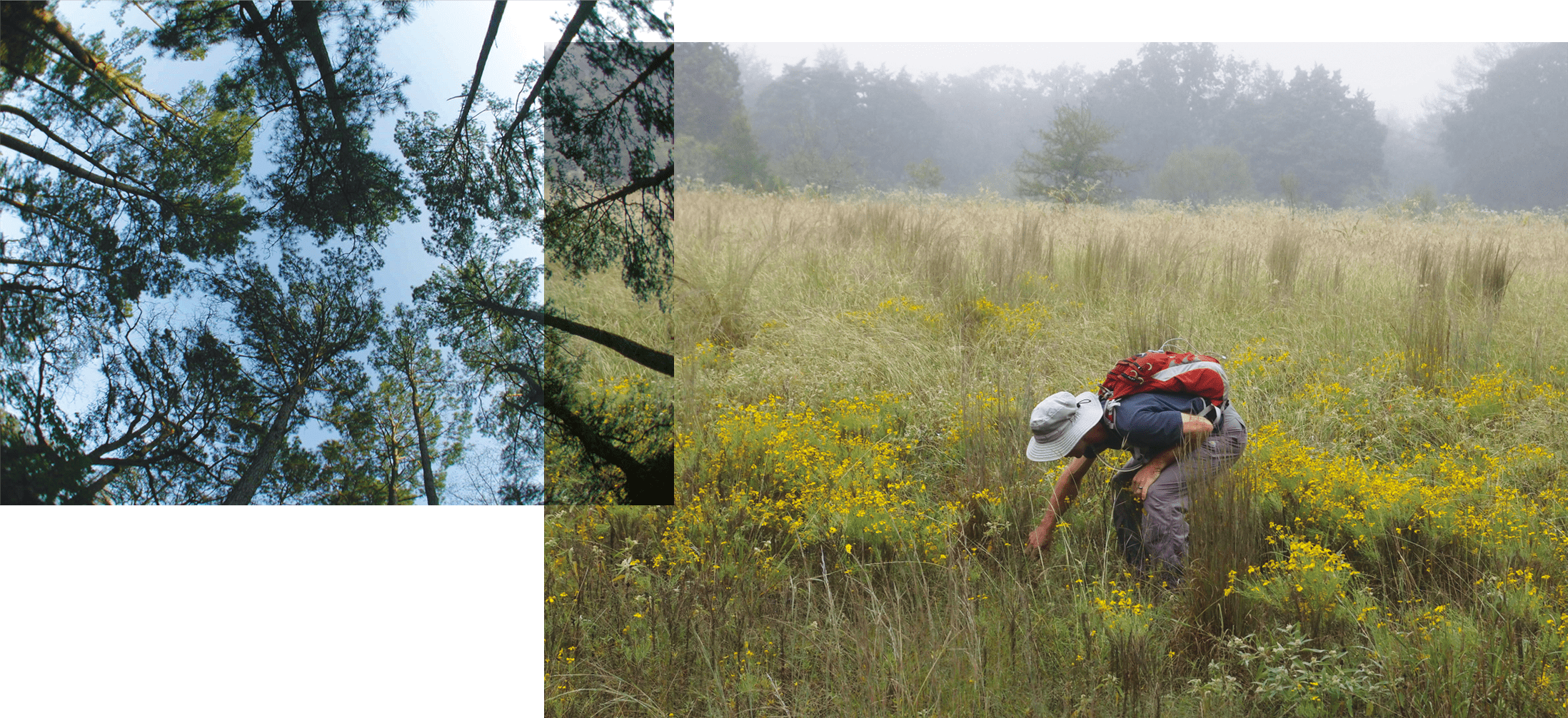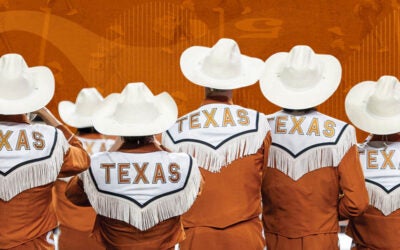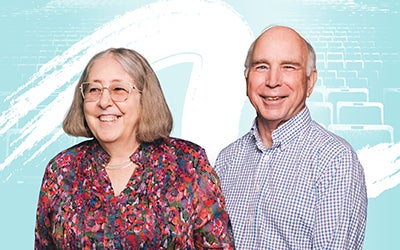In the pines

Photos: Courtesy of the College of Natural Sciences
Alumna supports her love of nature through gifts to College of Natural Sciences
On 581 acres near Smithville sits The University of Texas at Austin’s Stengl Lost Pines Biological Station. This heavenly parcel boasts hardwood trees, meadows, ponds, a unique array of plants and wildlife, and famed relic pines. The loblolly pines here belong to the westernmost grove in the U.S. and are part of the biodiversity that makes Stengl Lost Pines a valuable site for research and education.
The story of how this Lost Pines treasure landed within the College of Natural Sciences begins with UT alumna Lorraine Stengl, known to many as “Casey.” The impact of her generous land donation, as well as a large endowment and transformative estate gift, will cement the university’s reputation for having one of the top programs in the country for research in ecology and evolutionary biology.
Stengl was the daughter of a mining engineer and a graduate of Midland High School. A bright, determined student, she became one of the first female graduates of UT’s chemistry department in 1939. While working at a hospital lab in Illinois she realized that she “was capable of doing more than lab work.” She earned a medical degree from Women’s Medical College of Pennsylvania, which later became part of Drexel University. In 1950, she set up her practice as a family physician in El Campo, where she cared for patients in a tri-county area for over 20 years.
Stengl and her lifelong partner Lorraine Wyer were looking for a place to relax on the weekends, hunt and “get away from the telephone ringing.” They discovered and purchased 208 acres of what Stengl called “majestic forest” in 1952. Stengl and Wyer worked together every weekend, tending to the acreage and exploring. When Stengl retired from her medical practice, she and Wyer spent even more time at their piney retreat.

A UT student explores Stengl Lost Pines Biological Station.
A Second Calling
Throughout her 99 years Stengl loved all things outdoors, but in the Lost Pines she found a true passion for biodiversity. She supported that passion through gifts to the College of Natural Sciences, establishing a professorship and later an endowed fellowship for graduate students.
In the ’80s she attended symposiums at UT’s Brackenridge Field Laboratory and formed a friendship with Dr. Larry Gilbert, director of the BFL since 1980 and professor of integrative biology. “Casey was an exceedingly bright and analytical person who was at once humble yet laser-focused on goals as they evolved,” said Gilbert. “She did not start out with a mission to develop a university field station, but she came to see that as the most significant use of her property and endowment.”
Those BFL visits planted a seed. She shared, “I never wanted to sell the land, and I thought it would be a waste if it was only used for summer retreats. I started thinking maybe this would be a good place for the university to have.”
In 1991, Stengl and Wyer donated the original 208 acres to create the Stengl Lost Pines Biological Station. In 2015, Stengl purchased adjacent property and extended the footprint of the station to nearly 600 acres where scientists now study ecological patterns among diverse species and students learn in an outdoor classroom.
But Stengl’s generosity reached beyond Lost Pines. Her estate gift of close to $40 million will support new initiatives in life sciences, biodiversity research, hands-on learning opportunities for students, and more.
“Now and for many years to come, what Casey Stengl did for UT will be celebrated.”
– David Hillis, professor of Integrative Biology
“Now and for many years to come, what Casey Stengl did for UT will be celebrated,” added David Hillis, a professor of integrative biology and director of UT’s Biodiversity Center, which oversees the field stations. Because of the endowment, the college has announced the establishment of a competitive Stengl-Wyer Postdoctoral Scholars program and faculty research grants to support cutting-edge discoveries about plants, animals and natural habitats.
“Dr. Stengl’s legacy,” said Paul Goldbart, dean of the College of Natural Sciences, “will forevermore support the highest-level research and education into the diversity of life and interactions between living things and their natural environments, in Texas and far beyond.”
Endowments provide lasting support to UT students, faculty and programs.
Texas Leader Magazine
More from this series
Back the Band
Gifts from two members of the Longhorn Alumni Band are helping the band march toward special milestones.
A Rock-Solid Education
Alumnus Tim Diggs is giving back to the school that gave him a strong foundation for his dream career.
Sharing Joy
Anita and Bill Cochran grew up experiencing the arts. Their gift provides Austin schoolchildren with similar opportunities.


